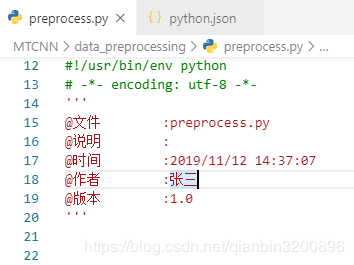python+pandas分析nginx日志的实例
需求
通过分析nginx访问日志,获取每个接口响应时间最大值、最小值、平均值及访问量。
实现原理
将nginx日志uriuriupstream_response_time字段存放到pandas的dataframe中,然后通过分组、数据统计功能实现。
实现
1.准备工作
#创建日志目录,用于存放日志 mkdir /home/test/python/log/log #创建文件,用于存放从nginx日志中提取的$uri $upstream_response_time字段 touch /home/test/python/log/log.txt #安装相关模块 conda create -n science numpy scipy matplotlib pandas #安装生成execl表格的相关模块 pip install xlwt
2.代码实现
#!/usr/local/miniconda2/envs/science/bin/python
#-*- coding: utf-8 -*-
#统计每个接口的响应时间
#请提前创建log.txt并设置logdir
import sys
import os
import pandas as pd
mulu=os.path.dirname(__file__)
#日志文件存放路径
logdir="/home/test/python/log/log"
#存放统计所需的日志相关字段
logfile_format=os.path.join(mulu,"log.txt")
print "read from logfile \n"
for eachfile in os.listdir(logdir):
logfile=os.path.join(logdir,eachfile)
with open(logfile, 'r') as fo:
for line in fo:
spline=line.split()
#过滤字段中异常部分
if spline[6]=="-":
pass
elif spline[6]=="GET":
pass
elif spline[-1]=="-":
pass
else:
with open(logfile_format, 'a') as fw:
fw.write(spline[6])
fw.write('\t')
fw.write(spline[-1])
fw.write('\n')
print "output panda"
#将统计的字段读入到dataframe中
reader=pd.read_table(logfile_format,sep='\t',engine='python',names=["interface","reponse_time"] ,header=None,iterator=True)
loop=True
chunksize=10000000
chunks=[]
while loop:
try:
chunk=reader.get_chunk(chunksize)
chunks.append(chunk)
except StopIteration:
loop=False
print "Iteration is stopped."
df=pd.concat(chunks)
#df=df.set_index("interface")
#df=df.drop(["GET","-"])
df_groupd=df.groupby('interface')
df_groupd_max=df_groupd.max()
df_groupd_min= df_groupd.min()
df_groupd_mean= df_groupd.mean()
df_groupd_size= df_groupd.size()
#print df_groupd_max
#print df_groupd_min
#print df_groupd_mean
df_ana=pd.concat([df_groupd_max,df_groupd_min,df_groupd_mean,df_groupd_size],axis=1,keys=["max","min","average","count"])
print "output excel"
df_ana.to_excel("test.xls")
3.打印的表格如下:

要点
1. 日志文件比较大的情况下读取不要用readlines()、readline(),会将日志全部读到内存,导致内存占满。因此在此使用for line in fo迭代的方式,基本不占内存。
2. 读取nginx日志,可以使用pd.read_table(log_file, sep=' ‘, iterator=True),但是此处我们设置的sep无法正常匹配分割,因此先将nginx用split分割,然后再存入pandas。
3. Pandas提供了IO工具可以将大文件分块读取,使用不同分块大小来读取再调用 pandas.concat 连接DataFrame
以上这篇python+pandas分析nginx日志的实例就是小编分享给大家的全部内容了,希望能给大家一个参考,也希望大家多多支持【听图阁-专注于Python设计】。

